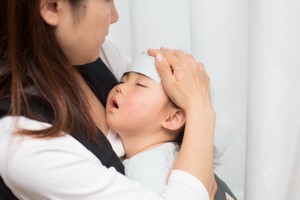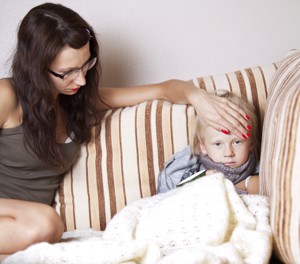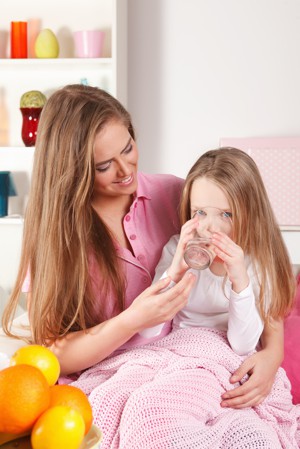 Fever is very common in children, and it is very normal for parents to worry when their baby or child shows signs of having a fever. If you are worried about your baby’s temperature then it’s important to remember that in the vast majority of cases, fever is harmless.
Fever is very common in children, and it is very normal for parents to worry when their baby or child shows signs of having a fever. If you are worried about your baby’s temperature then it’s important to remember that in the vast majority of cases, fever is harmless.
In fact, it is our body’s response to infection, and actually a good sign to indicate that our immune system is working as it should be. If your baby or child has a fever, it is probably because they have a virus such as a cold. Your child may also experience a mild fever following vaccinations.
What Are The Signs Of Fever In Children?
The best way to determine if your baby has a fever is to use a thermometer. You can pick up a simple digital thermometer from most supermarkets and pharmacies. A fever is classed as a temperature that is higher than 37.5 degrees centigrade. Normally, your baby or child’s temperature will be somewhere around 36.4 degrees centigrade, but this will vary from time to time and child to child.
Your child will also feel hot to touch, on her back, tummy, or forehead. Hands and feet are not a good indicator of your child’s temperature as they can often be cooler than the rest of the body. Your child may also appear flushed or feel damp from sweat.
Should I Be Worried About My Child’s Fever?
 Most of the time, your child’s fever will not be harmful and you will not need to seek medical help.
Most of the time, your child’s fever will not be harmful and you will not need to seek medical help.
However, you should always seek medical help if the following applies:
- Your baby has a temperature above 38 degrees centigrade and is less than three months old
- Your baby has a temperature above 39 degrees centigrade and is between three and six months old
- Your baby develops a rash, in particular one that does not fade when a glass is pressed firmly against it
- Your child is showing signs of dehydration, such as fewer or no wet nappies, dark yellow urine, sunken soft spots on their head, or they have refused fluids for eight hours or more
- Your child is very sleepy / drowsy, difficult to wake, appears limp / floppy / etc.
- Your baby is crying uncontrollably and cannot be soothed, or your baby has a high pitched wailing cry
- Your child has difficulty breathing, possibly with wheezing, fast breathing, or their stomach is being sucked in each time they breathe indicating that they are finding breathing hard work
- Your child has a seizure (this is common with children with a high temperature)
- Your child appears to have a blue or grey colour
- The fever lasts for more than five days
If your baby is older than six months, then a temperature higher than 39 degrees is not necessarily anything to worry about, instead, it is better to look at their overall appearance when trying to determine if they ill.
Therefore, if your child has a fever of 39.5 degrees but otherwise appears well, alert, taking on fluids and not in any obvious discomfort, then you probably don’t need to be too concerned, but continue monitoring them for any changes.
How Can I Treat My Child’s Fever At Home?
 Make sure your child stays hydrated throughout, by offering plenty of fluids, such as breastmilk / formula, or water. If your child is not eating, do not be concerned, it is more important that he or she takes in fluids.
Make sure your child stays hydrated throughout, by offering plenty of fluids, such as breastmilk / formula, or water. If your child is not eating, do not be concerned, it is more important that he or she takes in fluids.
- You can use infant paracetamol or infant ibuprofen to reduce fever, but this may not be necessary, unless your child also appears to be in pain.
- Keep your child cool by removing layers of clothing, but don’t let them get cold enough to start shivering.
- Monitor your baby’s condition regularly. Although it is likely that your child is simply facing a cold, children can deteriorate rapidly if their condition is more serious, and if you have any concerns, seek medical advice.
